Taxpayers bought this land. But much of it is hidden.
More than a decade after Nassau's Environmental Bond Act land purchases, plans for welcome booths and walking trails, kayak launches and well-placed benches for contemplation haven’t materialized.
After 300 newly protected acres were bought under Nassau County’s two landmark Environmental Bond Acts, officials and program backers planned for welcome booths and walking trails, kayak launches and well-placed benches for contemplation.
“The only thing that I envision is to make it accessible to the public,” Tom Maher, environmental coordinator for then-County Executive Thomas Suozzi, told county legislators in July 2006, when the first six acquisitions were approved. “It’s the public that purchased these properties.”
More than a decade later, many of these plans haven’t materialized, a Newsday investigation has found, leaving the county with a hidden landscape of pristine open spaces that many of its residents never use and may not even know exist – though they continue to pay for it.
At one site, an Eagle Scout was responsible for the only substantial improvements: a small strip of fencing and a single gravel parking spot cut onto a narrow road shoulder.
At another, the modest county sign noting its public preservation disappeared for years.
At a third, a “Dead End” warning is posted on a chain-link fence blocking entry.
“There’s no real money to even patrol and keep an eye on these,” said Richard Schary, vice chairman of the county’s Open Space and Parks Advisory Committee, which reviewed environmental bond purchases.
The absence of once-promised markers, promotion and amenities affects about a third of the acres that Nassau spent $100 million on between 2006 and 2012, using bond proceeds voters approved in two referendums.
Some of the acquisitions extended nature preserves that had existed for decades, or kept the county’s last farms running and needed little in the way of enhancement.
But much of the newly created public green space – some of which was bought from people with ties to county politics, the property selection process or both – is marked by what isn’t there, starting with prominent entry points and informational kiosks.
County officials once estimated that these improvements would have cost less than $300,000 but later said a general lack of funds and resistance from environmentalists scuttled the plans. They also alluded to opposition to access enhancements from the people who had long held the properties, primarily pieces of tucked-away North Shore estates sold to Nassau for prices that sometimes eclipsed county appraisals or market value assessments.
“We went over and above to make sure every property would have access, and we got some pushback, believe it or not, from the families,” said Sean Rainey, the deputy real estate director under Suozzi who advocated for some of the never-realized plans, such as heavier promotion.
He recalled that he once had put up signs pointing visitors from an existing county preserve to newly acquired land across the street. Area residents who rode horses there, he said he believes, took them down.
“They didn’t like the fact the public was accessing the property that they felt they had a right to,” Rainey said.
Daniel Press, a professor of environmental studies at the University of California Santa Cruz, who has written extensively on government land preservation, said there is a higher chance of public disillusionment with open space programs that don’t strike the right balance between protecting sensitive parcels and making them known and accessible.
“If the public doesn’t feel like they have access to those big pieces – if they are remote or the recreational opportunities are not very good – then they feel resentful,” Press said. “The thought is, ‘We spent all this money, and we don’t have access here.'”
Suozzi, a Democrat who served as county executive from 2002 to 2009 – and now represents the 3rd Congressional District – declined to speak in detail about the bond acts, including property access issues. His political adviser, Kim Devlin, issued a statement that, in part, said the program “enabled the county to protect its precious resources from development and environmental degradation.”
Other bond issue backers built on that point, noting that access improvements and other issues should be considered secondary to ensuring that ecologically sensitive land is never developed.
“The idea was to preserve what’s left and I think we accomplished that,” said Adrienne Esposito, the Citizens Campaign for the Environment executive director who also served on the county advisory committees that recommended parcels for purchase. “The subject of access can always be taken up. It’s not lost.”
The process laid out by the bond act referendums required parcels to be nominated to -and then recommended for purchase by – the advisory committees largely appointed by the county executive. Suozzi’s office signed off on the recommendations after obtaining approval from the county’s Planning Commission and Open Space and Parks Advisory Committee. As a last step, a supermajority of the county legislature had to vote in favor of each deal.
The advisory committees gave priority to potential open space purchases located in a special groundwater protection area, near existing preserves or under development pressure. Their report, however, also specifically noted that “accessibility to the public” was among the most important considerations for recommended parcels.
Lisa Ott, president and CEO of the North Shore Land Alliance, the Oyster Bay nonprofit that lobbied for the referendums and was involved in the property selection process, said access was always a goal. But she argued that the most important aspect was protecting land.
“The Democrats and Republicans came together,” Ott said, noting the unanimous approval of all bond act purchases by the 19-member county legislature as a rarity in Nassau politics. “They did something good for the future of Long Island and it was one of those brief and shining moments when the clouds aligned.”
Access plan stalls
The bond acts that passed overwhelmingly in 2004 and 2006 created $150 million in dedicated environmental funding; about $50 million was earmarked primarily for park and storm-water improvements. The rest was used for open space preservation through the acquisition of land or development rights.
Nearly all of that money was spent under Suozzi.
The timing of Suozzi’s surprise loss to Republican Edward Mangano in 2009 left many of the administration’s access promises – stated generally during public legislative meetings – unfulfilled. Staff under Mangano at first attempted to pick up the torch, in specific detail.
In 2011, county parks, public works and real estate officials jointly drafted an enhanced public access proposal that would have installed entryway kiosks, with maps and other information about the land, at 10 sites purchased with bond act funds, “proper signage” at nine sites, decorative post-and-rail fencing around the property boundaries at four sites and allocated money for surveys for new trails at three sites.
The so-called “Nassau County Open Space Plan,” never formally released but obtained by Newsday from the county, was developed “to find ways to better utilize” bond act purchases and “assure that these properties are accessible to residents.”
After asserting that some properties, such as the working farms, didn’t lend themselves to any improvements, the report concluded: “The county believes that the improvements described in this plan strike a balance between preservation of open space, accessibility to residents of Nassau County and wisely using the county’s financial resources.”
An engineering firm drew up proposals for some of the work, estimating its cost at $238,000.
At that point, nearly all of the open space funds had been used. The last transaction would come a year later, in 2012, when Mangano negotiated a deal to buy 4.2 acres of the old Brooklyn Water Works property in Freeport for $6.2 million. The property was owned by the influential developer and Oheka Castle owner Gary Melius, a Mangano friend who gave him thousands of dollars in campaign contributions.
In paying Melius $3.5 million more for his land than its highest appraisal by the Suozzi administration, Mangano’s office was in line with the figures reached by its appraisers. But the higher price led to $4.5 million being taken from what little remained of the bond acts’ acquisition funds. So the county then tapped a separate open space account for the additional $1.7 million balance, taking more than half of what was available there at the time.
Mangano, who left office at the end of last year, recently stood trial on unrelated federal corruption charges, with the case ending in a mistrial. His attorney did not respond to a request for comment.
Of the proposed access plan drafted in 2011, Brian Schneider, who worked on it for Mangano and now serves as a deputy county executive for his successor, Democrat Laura Curran, said: “It just kind of withered. I don’t think we really had clear direction.
“Some people had strong opinions about it [getting done], other people were like, ‘This needs to be left alone.'”
Today, Nassau has agreements with the Land Alliance for basic maintenance and upkeep of some sites.
In explaining the lobbying she sometimes had to do to persuade estate owners to sell land to the county, Ott acknowledged the mindset that caused pushback to access.
“It was a risk for people to sell their land to the government. They didn’t know if tour buses…” she said, her thought trailing off. “They were fearful.”
‘People’s backyards’
During legislative discussion on the 11-acre old-growth forest in Glen Cove dubbed “Red Spring Woods,” some lawmakers, led by then-Planning, Development and Environment Committee chairman Dave Denenberg, said they were uncomfortable with the property’s location within a ring of residential homes.
He called the preserve, in essence, “people’s backyards.”
“If we’re protecting your backyard, it better be open,” Denenberg, in an interview, recalled telling Suozzi administration officials.
The lawmaker – who left office in 2015 after his guilty plea to federal mail fraud charges related to his private law firm work – extracted pledges that they’d eventually provide signage, parking, a clear entryway and marked trails at the Glen Cove site and others.
“That’s the intent to do with all of the properties, create trail maps so people can access the properties,” Maher repeated in 2008. “But it takes a little time to put it together.”
At Red Spring Woods, the county only erected a small sign noting the land’s preservation as open space – one in which Suozzi’s name was later plated over with that of his successor, Mangano. A narrow gravel cutout on the shoulder of the road, barely enough for a single car, and a small strip of post-and-rail fence were put in not by Nassau, but by the Eagle Scout.
New, marked trails were never cut through the property and an informational kiosk, including a map, was never placed at the entryway. And walking onto the property, with little designation of its boundaries, feels akin to trespassing onto people’s backyards.
One yard belongs to Gordon Allan, who was Suozzi’s special assistant in the county personnel office at the time he sold 1.77 acres of his family’s land to the county for $600,000, to extend the initial 9-acre Red Spring Woods purchase.
The most significant completed aspects of the county’s 2011 access plan were small gravel parking lots installed, at costs of roughly $37,000 each, at the 25-acre Mill Neck property that was split from the estate of Adele Smithers, the philanthropist who had been a campaign contributor to Suozzi; and at the 29-acre Red Cote Preserve in Oyster Bay Cove, put together with parts of the three estates owned by Land Alliance financial backers and the ex-in-laws of Suozzi’s onetime deputy planning commissioner, Katie Schwab.
Rainey, the deputy real estate director under Suozzi, advocated for the parking lots and said the one at Red Cote Preserve, especially, received “pushback” from residents and officials of exclusive Oyster Bay Cove, which has a population of roughly 2,000 people and a median household income of $250,000, according to census figures.
“They didn’t want a parking lot there. We said, ‘You have to. You have to put access to the public,'” he recalled.
But most residents wouldn’t know the parking lot exists, because at the preserve’s most visible frontage point – the corner of Route 25A and Yellow Cote Road – the only sign is for a private school a half-mile up the road. The sign there that noted the county land’s preservation has been missing for at least six years.
The preserve’s parking lot also long had no sign indicating its public ownership – until a small one was placed there in late May, following Newsday inquiries.
“It kind of annoys me, because that’s publicly preserved land,” Rainey said.
Thomas Pulling, a Suozzi campaign and Land Alliance contributor who sold 16 acres of his family’s land to the county for $6.5 million – making up the largest portion of the Red Cote Preserve – said he and his sister, who sold a smaller portion of land toward it, “never would or have discouraged use of the property.”
However, he added: “Kiosks and signs and fencing would be sort of the counter to the fact that open space really needs to look as natural as possible.”
Within the last month, officials for the first time placed a small informational kiosk – featuring a map and description of the site’s meadow and woodland wildlife – at the foot of the parking lot.
At Red Spring Woods, residents who supported the land’s preservation say its value as a site of quiet recreation is unfulfilled, as its lack of parking or delineation and its location in a residential neighborhood removed from any main county thoroughfares discourages wider public use.
“As far as being a benefit to the county at large, I’d probably say no,” said David Nieri, a Glen Cove resident who designed a website for the Coalition to Save Red Spring Woods, a local group that pushed for its preservation. “The only benefit I saw is that it’s one additional parcel of woods that won’t be developed.”
“Most people don’t even know about that spot,” said Rainey, who produced a pamphlet advertising county open space acquisitions that never received prominent display or distribution.
In addition, neither Red Spring Woods nor Red Cote are listed among county operated preserves on the county’s website.
‘You can hop a fence’
The county’s 2011 draft access plan also proposed drawing attention to a 3.4-acre cluster of wetlands on a peninsula in Baldwin Harbor. Nassau bought the lots composing the site for $4.8 million using bond act funds.
The report proposed prominent signage and an informational kiosk. Advocates for the purchase said they once envisioned a public kayak launch.
Today, however, it is fenced off from public access, with a “Dead End” sign at the end of the residential block it sits on. Even the small, ceremonial sign marking its preservation as open space is blocked and obscured.
“You can hop a fence and go through there,” said Schneider, noting that the barrier was erected, at a cost of $12,710, because of concerns from residents who live at the end of the block about parking, security and maintenance. “There really isn’t that much to see.”
But in 2006, when Maher was pitching legislators on acquisition of the bulk of the property, he noted adjacent land already owned by Nassau, saying, “we could build onto that and really make it into something that is attractive and very useful to the residents of Nassau County on the South Shore.”
Jimmy Vilardi, the developer who held the majority of the Baldwin Harbor lots – before selling them for $4 million to the county after his luxury housing proposal hit resident opposition – said he no longer has a vested interest in what happens there. But he said the vistas from the site across the bay made it worthy to try to provide access to.
“It’s a beautiful piece. Totally open bay,” said Vilardi, an elected Republican Town of Hempstead sanitary district commissioner who also serves as chairman of the county bridge authority. “It would be nice if they set these things up for some public use.”
A one-acre plot of wetlands along a canal in Seaford, purchased in 2008 for $635,000, runs parallel to the county’s Cedar Creek Park on one side and is surrounded by homes on the other. Ott called it a “beautiful, serene spot where you can [imagine] a bench, and people walking.”
“And there were lots and lots of birds there the day we visited,” she said, noting how she envisioned the property would be appreciated. “There was just nothing there that was really undeveloped and gave people a place to sit and reflect and ponder.”
Like the other properties, however, the county never installed an entry kiosk or the decorative fencing around its borders. Today, “No Trespassing” signs are posted on utility poles along the curb, while the lack of clear signage and a thick wall of overgrown brush suggests no real access point to the waterside strip.
“So what did we accomplish?” said Victor Consiglio, a former Massapequa resident who volunteered in local waterways cleanup efforts and served on one of the county advisory committees that recommended bond act purchases. “We helped the landowner.”
Gary Carlton, an attorney and North Woodmere civic activist who served on the same advisory committee, took the opposite viewpoint: “I think in a lot of ways it was more important that the county just preserve this for the environmental purpose, rather than think it was going to be a big public access space.”
Schneider, who inherited management of some of the open space purchases after they were finalized, said he could see both points of view but noted that county officials could have more clearly and explicitly drawn up access plans before closing on deals.
Many deals were rushed through in a matter of months, with environmentalists warning that prospective sellers would turn to developers if Nassau didn’t act with urgency.
“They just did it,” Schneider said. “There was no wherewithal of thought of the next step.”
Do you have information on any other sites purchased under Nassau’s environmental bond acts that remain obscured, hidden or lack sufficient public access? Contact Paul LaRocco at (631) 843-2736 or paul.larocco@newsday.com.

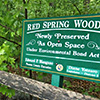 Overview:
Overview: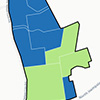 Map:
Map: Part 1:
Part 1: Part 2:
Part 2: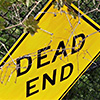 Part 3:
Part 3:
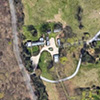

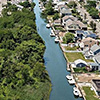 Video:
Video: